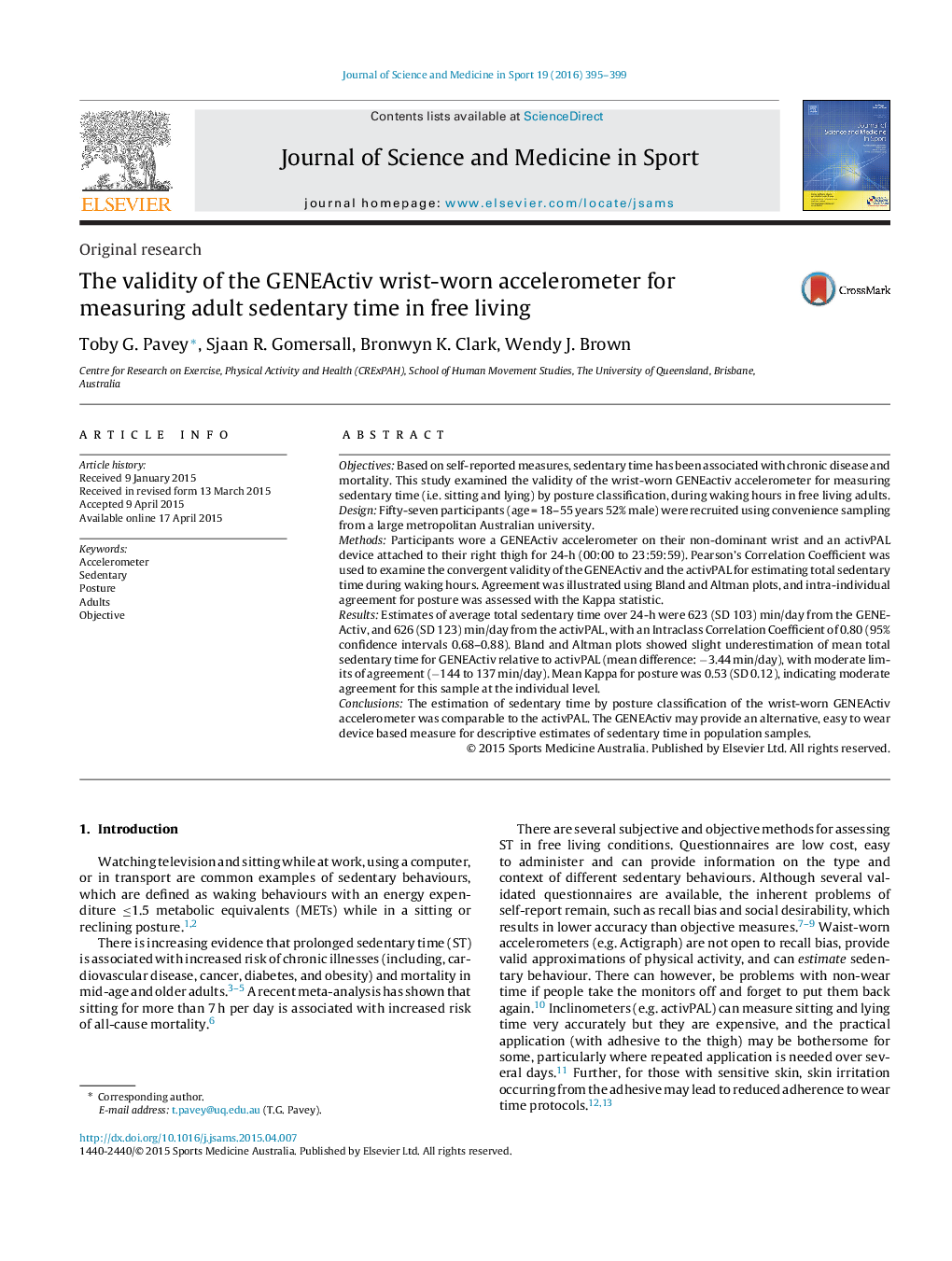| Article ID | Journal | Published Year | Pages | File Type |
|---|---|---|---|---|
| 2700543 | Journal of Science and Medicine in Sport | 2016 | 5 Pages |
ObjectivesBased on self-reported measures, sedentary time has been associated with chronic disease and mortality. This study examined the validity of the wrist-worn GENEactiv accelerometer for measuring sedentary time (i.e. sitting and lying) by posture classification, during waking hours in free living adults.DesignFifty-seven participants (age = 18–55 years 52% male) were recruited using convenience sampling from a large metropolitan Australian university.MethodsParticipants wore a GENEActiv accelerometer on their non-dominant wrist and an activPAL device attached to their right thigh for 24-h (00:00 to 23:59:59). Pearson's Correlation Coefficient was used to examine the convergent validity of the GENEActiv and the activPAL for estimating total sedentary time during waking hours. Agreement was illustrated using Bland and Altman plots, and intra-individual agreement for posture was assessed with the Kappa statistic.ResultsEstimates of average total sedentary time over 24-h were 623 (SD 103) min/day from the GENEActiv, and 626 (SD 123) min/day from the activPAL, with an Intraclass Correlation Coefficient of 0.80 (95% confidence intervals 0.68–0.88). Bland and Altman plots showed slight underestimation of mean total sedentary time for GENEActiv relative to activPAL (mean difference: −3.44 min/day), with moderate limits of agreement (−144 to 137 min/day). Mean Kappa for posture was 0.53 (SD 0.12), indicating moderate agreement for this sample at the individual level.ConclusionsThe estimation of sedentary time by posture classification of the wrist-worn GENEActiv accelerometer was comparable to the activPAL. The GENEActiv may provide an alternative, easy to wear device based measure for descriptive estimates of sedentary time in population samples.
